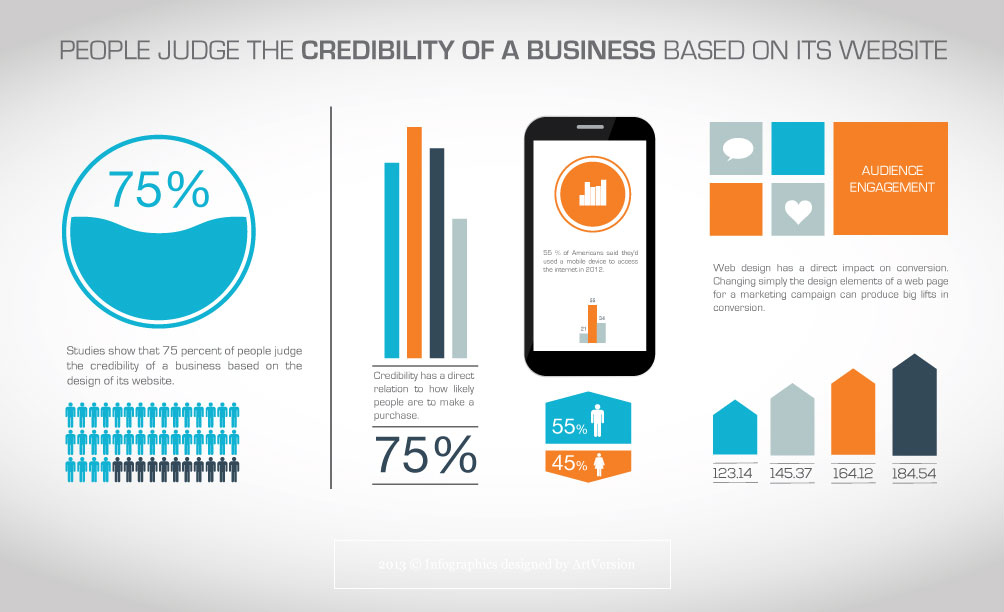The Advancement Of Web Site Design: From Earlier Times To Now
The Advancement Of Web Site Design: From Earlier Times To Now
Blog Article
Write-Up Produced By-Johnsen Stender
In the past, internet sites were easy and concentrated on details. Navigating was direct, and layout was for desktop computers. Now, customer experience is key. Information overviews styles for simple navigation. Receptive designs match various gadgets. Today, dark mode lowers strain, and minimalist menus improve navigating. Interactive attributes engage customers, and vibrant visuals stick out. AI assimilation increases engagement. See exactly how design has actually developed to improve your on-line journey.
Early Days of Website Design
In the early days of website design, simpleness reigned supreme. Internet sites were fundamental, with minimal colors, font styles, and layouts. The focus was on offering details as opposed to flashy visuals. Customers accessed the web via slow-moving dial-up connections, so speed and capability were vital.
Navigating food selections were straightforward, usually located at the top or side of the page. Sites were made for home computer, as mobile browsing had not been yet widespread. Content was king, and developers focused on simple readability over complicated design components.
https://www.forbes.com/sites/theyec/2019/12/17/five-tips-for-selling-digital-marketing-to-local-businesses/ was the key coding language used, and developers had to work within its constraints. Computer animations and interactive functions were marginal compared to today's requirements. Internet sites were static, with little dynamic content or tailored customer experiences.
Surge of User-Focused Design
With the advancement of site style, a shift in the direction of user-focused design principles has actually ended up being progressively prominent. Today, creating web sites that prioritize customer experience is critical for engaging site visitors and achieving organization objectives. User-focused design involves comprehending the demands, preferences, and behaviors of your target audience to tailor the web site's format, content, and features appropriately.
Designers currently conduct detailed study, such as individual surveys and usability screening, to collect understandings and comments straight from individuals. This data-driven approach assists in developing intuitive navigation, clear calls-to-action, and visually attractive user interfaces that resonate with visitors. By positioning the individual at the facility of the layout process, sites can supply a more individualized and delightful experience.
Receptive design has actually likewise become an essential facet of user-focused design, making certain that web sites are optimized for numerous gadgets and display sizes. This adaptability improves access and usability, accommodating the diverse ways individuals connect with websites today. In essence, the rise of user-focused design represents a shift towards producing digital experiences that focus on the needs and assumptions of the end user.
Modern Trends in Website Design
Discover the current trends forming web design today. One noticeable trend is dark mode layout, using a smooth and modern appearance while minimizing eye strain in low-light atmospheres. One more vital pattern is minimal navigation, simplifying food selections and enhancing customer experience by concentrating on essential elements. Including micro-interactions, such as computer animated buttons or scrolling impacts, can create a much more engaging and interactive web site. Responsive style continues to be important, making certain seamless customer experiences throughout various tools. In addition, utilizing strong typography and unbalanced designs can include aesthetic rate of interest and draw attention to certain content.
Incorporating AI innovation, like chatbots for customer assistance or customized recommendations, improves individual interaction and streamlines processes. Availability has additionally come to be a substantial pattern, with developers prioritizing inclusive design techniques to deal with varied individual demands. Embracing sustainability by optimizing web site efficiency for rate and efficiency is one more emerging trend in website design. Teaming up with https://www.google.com/maps/place/Moon+and+Owl+Marketing/@32.9757271,-106.5344695,1840583m/data=!3m1!1e3!4m6!3m5!1s0x864ddeaa4179705b:0x488d41d2cc6b9750!8m2!3d32.9757271!4d-97.5696258!16s%2Fg%2F11b6mpccrg?entry=ttu&g_ep=EgoyMDI1MDIxMS4wIKXMDSoJLDEwMjExNDUzSAFQAw%3D%3D and information analytics to iterate and improve style constantly is vital for staying appropriate in the ever-evolving electronic landscape. By accepting these contemporary trends, you can create an aesthetically appealing, straightforward internet site that reverberates with your audience.
Verdict
As you review the advancement of website layout from the early days to now, you can see how user-focused layout has become the driving pressure behind contemporary trends.
Embrace the journey of change and adjustment in website design, constantly keeping the individual experience at the leading edge.
Remain present with the current trends and modern technologies, and never stop progressing your strategy to produce visually spectacular and easy to use sites.
Develop, adapt, and develop - the future of web design remains in your hands.
